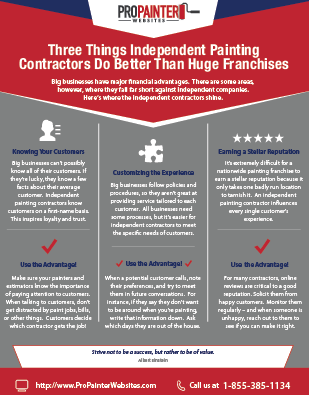Recognizing Seasonal Influences On Commercial Exterior Painting: Necessary Knowledge For Success
Recognizing Seasonal Influences On Commercial Exterior Painting: Necessary Knowledge For Success
Blog Article
Developed By-McLamb Whalen
When you're intending a business external painting project, seasonal variables can make or damage your results. You'll want to consider just how temperature level and humidity influence paint application and drying times. Picking the ideal period can ensure your paint sticks effectively and lasts much longer. Yet which seasons are truly the most effective for this sort of job? Let's discover the key elements that can impact your job's success.
The Effect of Temperature Level on Paint Application
When you're planning a commercial external painting project, the temperature can significantly influence how well the paint adheres and dries out.
Preferably, you intend to paint when temperature levels range between 50 ° F and 85 ° F. If it's also cool, the paint might not treat effectively, bring about concerns like peeling off or fracturing.
On the other side, if it's too warm, the paint can dry out also swiftly, protecting against proper bond and resulting in an uneven finish.
You ought to also take into consideration the moment of day; morning or late afternoon offers cooler temperatures, which can be more positive.
Always check the producer's recommendations for the specific paint you're utilizing, as they usually provide advice on the optimal temperature level array for optimal results.
Humidity and Its Impact on Drying Times
Temperature isn't the only ecological variable that affects your commercial external painting project; moisture plays a substantial role also. High moisture levels can slow down drying times considerably, influencing the overall top quality of your paint job.
When the air is filled with dampness, the paint takes longer to treat, which can bring about issues like inadequate attachment and a higher risk of mildew growth. If visit the up coming document on an especially damp day, be prepared for extensive wait times between layers.
It's vital to keep an eye on local climate condition and plan appropriately. Ideally, go for humidity degrees in between 40% and 70% for ideal drying out.
Keeping these factors in mind ensures your job remains on track and delivers a lasting finish.
Best Seasons for Commercial Exterior Paint Projects
What's the best time of year for your business outside paint projects?
Springtime and early loss are typically your best choices. Throughout these seasons, temperatures are mild, and moisture degrees are often lower, producing ideal problems for paint application and drying.
Avoid summer's intense heat, which can cause paint to completely dry too rapidly, resulting in bad attachment and finish. In a similar way, winter season's cold temperature levels can prevent proper drying and treating, running the risk of the durability of your paint job.
Aim for days with temperature levels in between 50 ° F and 85 ° F for optimum results. Remember to examine the local weather forecast for rainfall, as damp problems can wreck your project.
Planning around https://cabinet-painters-near-me23322.bloggosite.com/42192432/essential-inquiries-to-address-before-working-with-a-painting-service-provider ensures your painting project runs efficiently and lasts much longer.
Verdict
To conclude, preparing your industrial exterior paint projects around seasonal factors to consider can make a substantial distinction in the end result. By organizing job during the suitable temperatures and humidity levels, you'll make sure much better bond and drying times. Bear in mind to watch on neighborhood weather forecasts and select the correct time of year-- springtime and early loss are your best choices. Taking these actions will certainly assist you attain a resilient and specialist surface that lasts.
